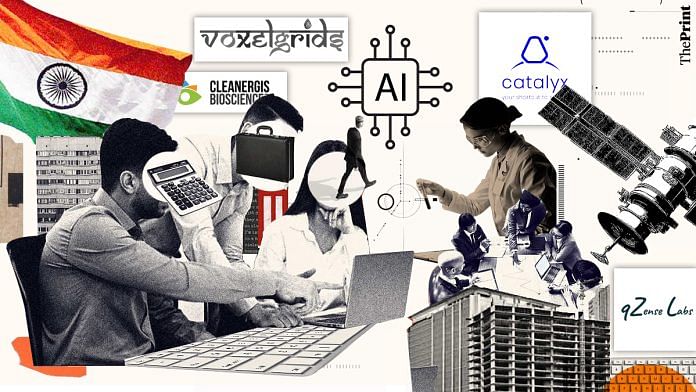Thank you dear subscribers, we are overwhelmed with your response.
Your Turn is a unique section from ThePrint featuring points of view from its subscribers. If you are a subscriber, have a point of view, please send it to us. If not, do subscribe here: https://theprint.in/subscribe/
Why have these domestic titans, despite decades of protectionism, preferential policies, and monopolistic advantage, failed to make meaningful inroads in global markets?
Startups, with fewer resources but more agility, are capturing international attention—from SaaS unicorns in the US to fintech disruptors in Southeast Asia. Meanwhile, DOLIs continue to dominate domestically with outdated products, poor customer experience, and little to no global competitiveness. It’s time to ask:
- Where are the global ambitions of India’s legacy business houses?
- Why do we not see Indian consumer brands or conglomerates competing at the scale of Samsung, Toyota, or Nestlé or even Starbucks?
- Has the comfort of regulatory capture and a protected market killed the hunger to innovate and expand?
As India pushes for 12% growth and global relevance, we must empower bold new enterprises, not just coddle old monopolies. The future belongs to the fearless, not the fossilized.
India, the world’s fifth-largest economy, is often seen as a high-potential yet constrained growth story. While a 6-7% GDP growth rate is widely accepted as the upper limit, the notion that India cannot achieve 12% GDP growth is rooted in myths rather than reality, Here, we try to dismantle these myths and outline why double-digit growth is possible.
1) Myth: India is a Difficult Place to Do Business
Reality: India has a well-structured policy framework and strong governance across states. While challenges exist, significant improvements in ease of doing business have been made. Investors are willing, but the real obstacles lie elsewhere.
- The dominance of entrenched oligarchs (DOLIs – “Dignified Oligarchs of India”), a legacy of the British Raj and license raj, has stifled competition by manipulating policies.
- Consumer awareness is growing, making these oligarchs uneasy as their monopolies are being challenged.
- India must focus on reducing bureaucratic hurdles to unleash its business potential fully.
2) Myth: India Cannot Innovate and Only Excels at Jugaad
Reality: Encouraging true innovation instead of intermediaries setting up payment gateways and retail platforms is key.
- Cutting-edge research in pharmaceuticals, deep tech, AI, and biotech needs strong policy backing.
- Reforms promoting startups and MSMEs will drive real innovation.
- Foreign universities should be allowed to establish 100% owned campuses in India.
3) Myth: Government is at the Mercy of Big Business
Reality: Despite two clear mandates, the government has done little to challenge entrenched oligarchs.
- Govt must stop shielding domestic monopolies and instead foster competition.
- High tariffs should be reduced so that Indian consumers can access better-quality products.
- Digital transparency must be enforced to curb illicit financial activities in real estate, luxury goods, and online transactions.
- Disinvestment should be prioritized—public sector giants like BSNL cannot be perpetual money sinks.
4) Myth: Policy Making is Autocratic and Lacks Feedback
Reality: Govt should ensure transparency and equal representation in decision-making.
- Cartels in steel and cement sectors should be checked through import liberalization or an MSP framework.
- The industry must become competitive rather than depend on government protection.
- India should liberalize trade policies to allow high-quality foreign products to compete fairly.
- The government should focus less on political opposition and more on bold economic reforms.
5) Myth: Foreign Companies Must Partner with Indian Oligarchs
Reality: There is no reason for global giants like Starbucks, BP, BlackRock, MGM, and BYD to be forced into joint ventures with entrenched Indian players.
- Remove all FDI caps to attract direct foreign investment without crony capitalism.
- Encourage competition by allowing European and Asian listed companies to invest in India independently without the need for having local tieups.
- Self-reliance should not come at the cost of investment
6) Myth: Self-Reliance Means Isolation
Reality: Selective self-reliance is necessary, but unnecessary protectionism is harmful.
- Defence self-reliance makes sense due to security concerns, but industries like chocolates, wine, and luxury goods should be open to global competition.
- New infrastructure firms should be encouraged instead of relying on a few dominant players.
- Create more private-sector enterprises on the model of Axis Bank and ICICI Bank to boost financial inclusion.
7) Myth: Vasudhaiva Kutumbakam (Global Brotherhood) is a Misused Concept
Reality: Strategic considerations should not come at the cost of economic growth.
-
- India must strengthen trade, diplomacy, and global partnerships, especially within SAARC.
- A GST-like framework should be implemented for SAARC trade.
- Political instability or security concerns should not hinder economic integration with neighbouring countries, I mean there is very little these countries can do on their own to be scared about.
Conclusion
With bold reforms and decisive leadership, India can break past traditional growth ceilings and achieve sustained double-digit expansion. The goal is ambitious but not impossible—it’s time to rethink India’s economic trajectory.
These pieces are being published as they have been received – they have not been edited/fact-checked by ThePrint.


